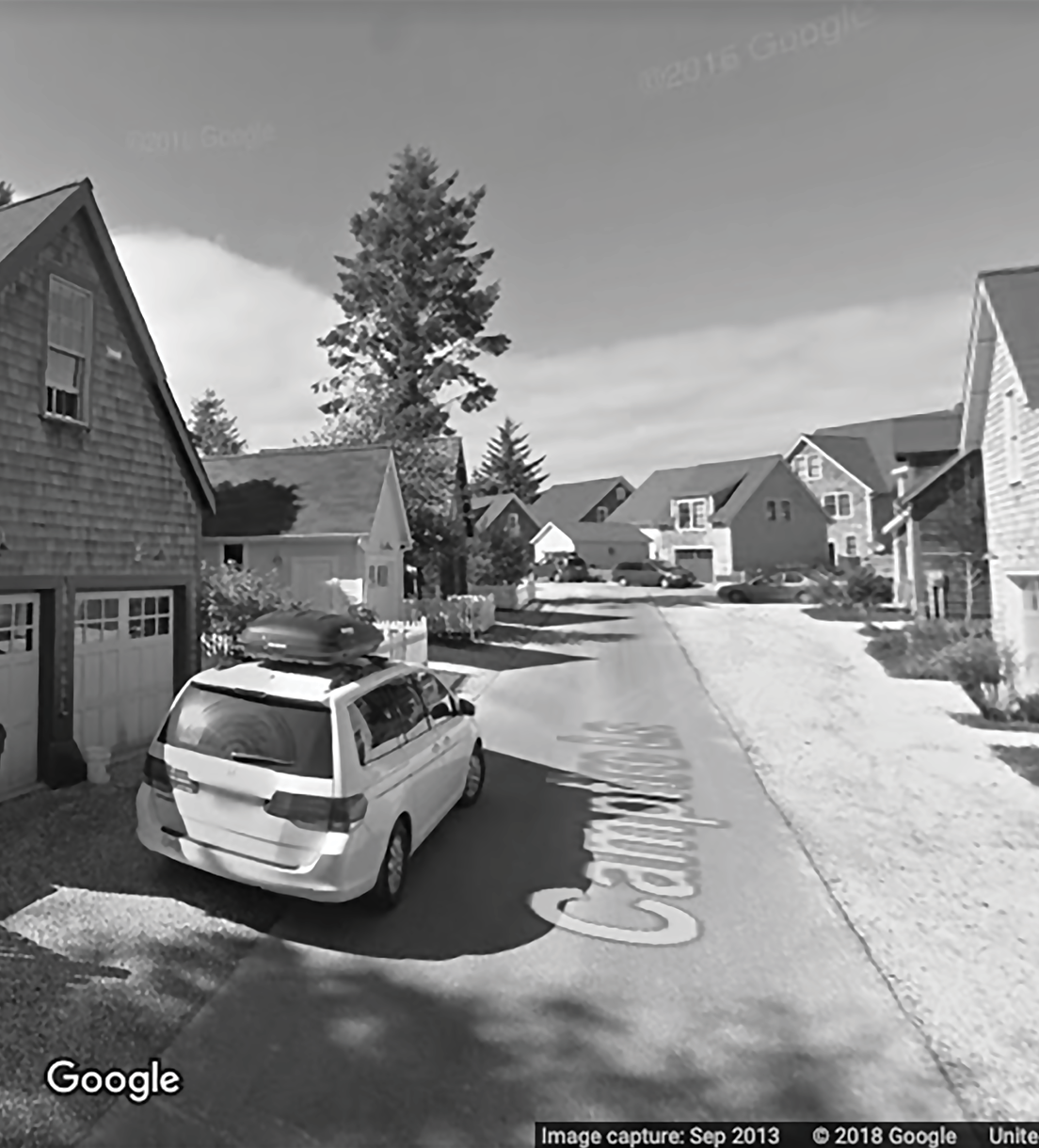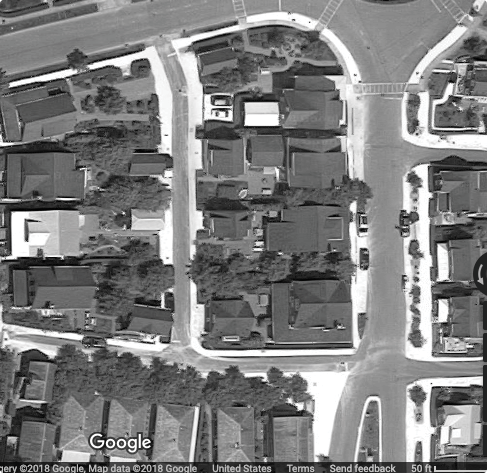…Within Small Blocks, make sure there is room where needed for vehicular access.

__Problem-statement: Within and through the interior of a block, there is a need for low-speed vehicular and pedestrian movement__
Discussion: The mid-block alley can provide an important function of service access, car parking, utility easements, and movement of pedestrians and vehicles. But a number of conditions need to be carefully considered.
One of the most important is to ensure that the alley is safe, which generally requires good sight distance from the windows of adjacent buildings. An additional measure of security is provided by accessory dwellings (“carriage houses”) positioned directly on the alleys.

A mid-block alley in Seabrook, Washington, also pictured in the photo at the beginning of this pattern.
An additional concern is that the alleys should not disrupt the pedestrian character of the intersecting streets. This is best accomplished by enclosing the buildings on either side of the alley at the street, to make the entrance as narrow as possible (typically approx. 6 meters or 20 feet).
__Therefore: Where vehicular access is needed to the interiors of blocks, consider using a mid-block alley. Place dry utilities in this alley easement, and provide parking as needed. Assure that there is good visibility on the alley from adjacent buildings to provide minimal security.__

Make the mid-block alley attractive to pedestrians, lining it with garages and accessory dwellings. Provide Human-Scale Detail and Construction Ornament. Assure that there are Layered Zones between the indoors and outdoors, with windows overlooking the alley and providing natural surveillance. …
notes
¹ A useful discussion of the pros and cons of alleys can be found in Martin, M. D. (2001). The question of alleys, revisited. Urban Design International, 6(2), 76-92.
See more Block And Plot Patterns